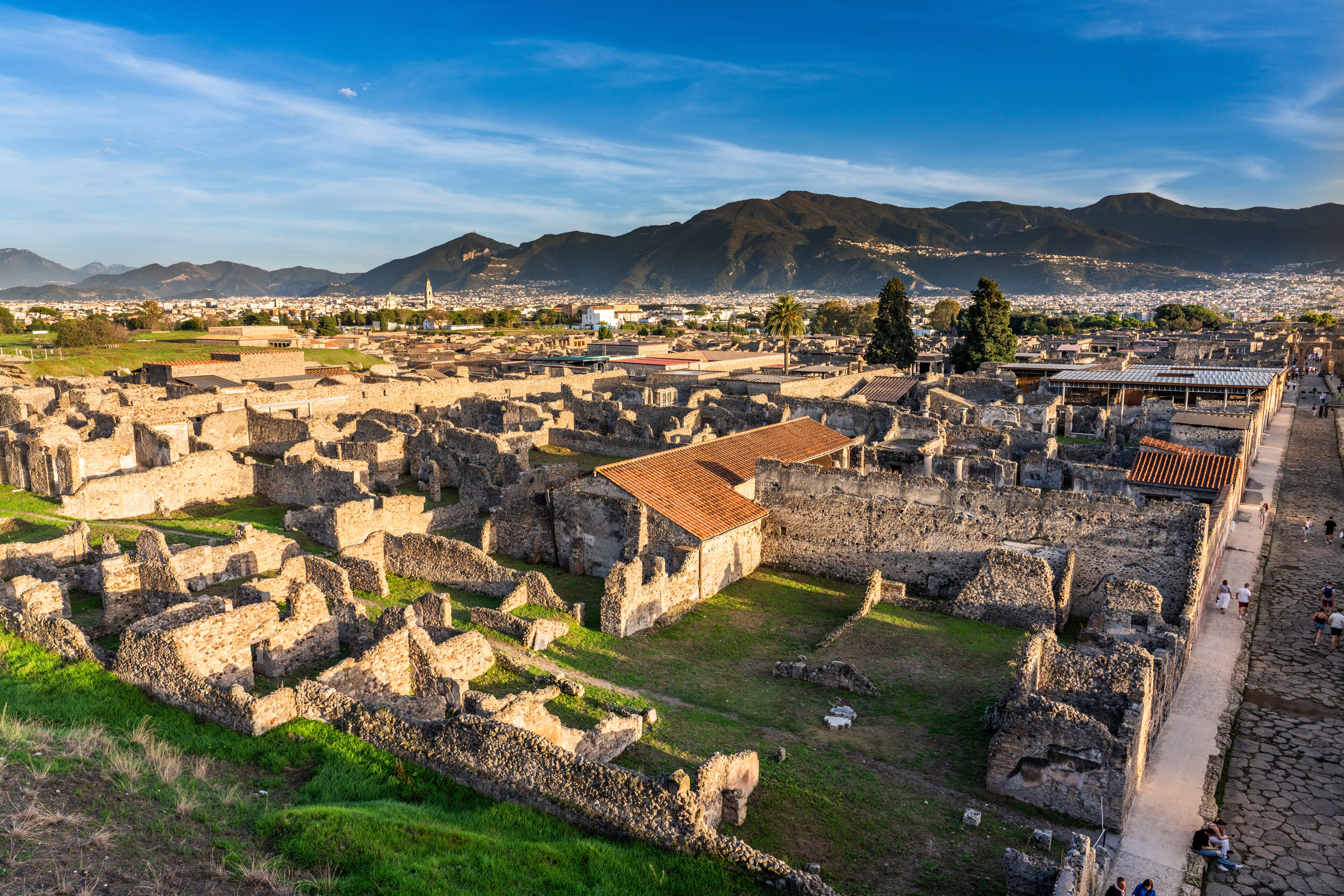Fascinating Facts About Mount Vesuvius

-
Formed from Two Volcanoes
Mount Vesuvius formed atop another volcano named Mount Somma Volcano creating its distinctive dual-peak structure. Over time, Vesuvius developed from the ancient crater of Monte Somma, shaping its iconic profile near Naples, Italy.
-
Unnamed Until AD 79
Before the eruption in AD 79, Mount Vesuvius had no name. It was named after the Roman god of fire and metalwork, Vulcan, following the devastating eruption.
-
A 17,000-Year-Old Volcano
Mount Vesuvius started forming about 17,000 years ago. It grew from the caldera of the older Monte Somma volcano.
-
Eight Major Eruptions So Far
Mount Vesuvius has erupted eight major times in recorded history, including notable events in 79 AD, 1631, 1794, 1906, and most recently in 1944.
-
Tax Exemption for Eruption Victims
After the devastating eruption in AD 512, the kingdom provided tax relief to residents affected by the disaster. This helped people rebuild their homes and farms after everything got covered in ash.
-
Dormant for 1,800 Years
After the famous eruption in AD 79, Mount Vesuvius remained quiet for about 1,800 years.
-
The AD 79 Eruption Lasted 24 Hours
The eruption in AD 79, which buried Pompeii and Herculaneum, lasted for 24 hours.
-
A Stratovolcano
Mount Vesuvius is classified as a stratovolcano, known for its tall, steep-sided cone formed by layers of hardened lava, ash, and volcanic rocks. These volcanoes are shaped like steep cones because of all the built-up material from past eruptions. Over time, the layers harden and create a towering mountain like Vesuvius.
-
Fertile Slopes
The slopes of Mount Vesuvius are richly fertile thanks to volcanic ash deposits acting as natural fertilizers rich in minerals. This fertile soil supports diverse agriculture, including fruits, vegetables, and vineyards, contributing to a lush landscape near Naples, Italy.
-
Aircraft Destroyed in 1944
The last major eruption was in March 1944. It lasted two weeks and destroyed almost 80 planes at the Pompeii Airfield. Luckily, no people were killed.
-
Plans for a New Eruption
Efforts are ongoing to reduce the number of people living in the high-risk "red zone." About 600,000 people live there now. Authorities have a plan to evacuate them if Vesuvius erupts again. Depending on the wind, an eruption could affect cities like Naples, Avellino, and Salerno.
-
The “Plinian” Eruption Column
Volcanologists use the term "Plinian" for large eruption clouds. This term comes from Pliny the Younger, who described the AD 79 eruption as an "umbrella pine" shaped cloud rising above the volcano.
Frequently Asked Questions: Mount Vesuvius

Q1 .Where is Mount Vesuvius located?
Mount Vesuvius is located in Italy, near the Bay of Naples in the Campania region.
Q2 .How did the eruption of Mount Vesuvius in 79 AD affect the city of Pompeii?
The eruption buried the city of Pompeii under a thick layer of ash and lava, preserving it for centuries and giving us a glimpse into ancient Roman life.
Q3. Is it safe to visit Mount Vesuvius?
Yes, it is generally safe to visit Mount Vesuvius, but it's essential to follow safety guidelines and updates on volcanic activity.
Q4. How tall is Mount Vesuvius?
Mount Vesuvius stands about 1,281 meters (4,203 feet) tall.
Q5. How often does Mount Vesuvius erupt?
Mount Vesuvius has erupted many times throughout history, with the last major eruption occurring in 1944. Recent activity has been minor.
Q6. Is Mount Vesuvius still active?
Yes, Mount Vesuvius is considered an active volcano because it has erupted within the last century.
Q7 .What are the dangers of living near Mount Vesuvius?
Living near Mount Vesuvius poses risks like volcanic eruptions, ashfall, and volcanic gases, which can affect health and property.
Q8 . What is the current status of Mount Vesuvius?
Mount Vesuvius is monitored closely by scientists for any signs of volcanic activity, though it's currently quiet.
Q9 .What kind of activities can you do at Mount Vesuvius?
At Mount Vesuvius, you can hike to the crater, enjoy panoramic views of Naples and the coastline, and learn about its volcanic history at the observatory.
Q10 . How long does it take to hike up Mount Vesuvius?
The hike up Mount Vesuvius usually takes around 30 minutes to 1 hour, depending on your pace and starting point.
Q11 . What is the view like from the top of Mount Vesuvius?
The views from the top of Mount Vesuvius are spectacular. To the south, you can see the archaeological area of Pompeii, and to the east is the city of Naples and the Gulf of Naples. You can also see down into the volcano’s crater.
Q12 . What is the best time of year to visit Mount Vesuvius?
The best time of the year to visit Mount Vesuvius is from the start of April to the mid of June, or from the start of September to the end of October.
Q 13. When was the last time Mount Vesuvius erupted?
The last time Mount Vesuvius erupted was between the 17th and 23rd of March 1944.